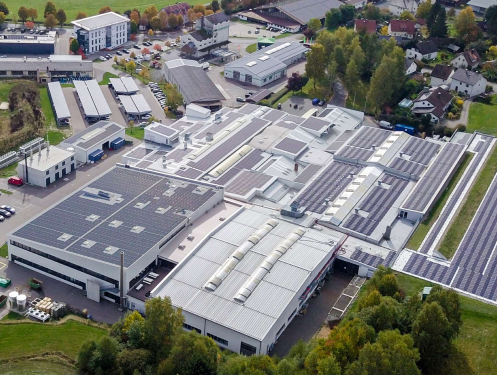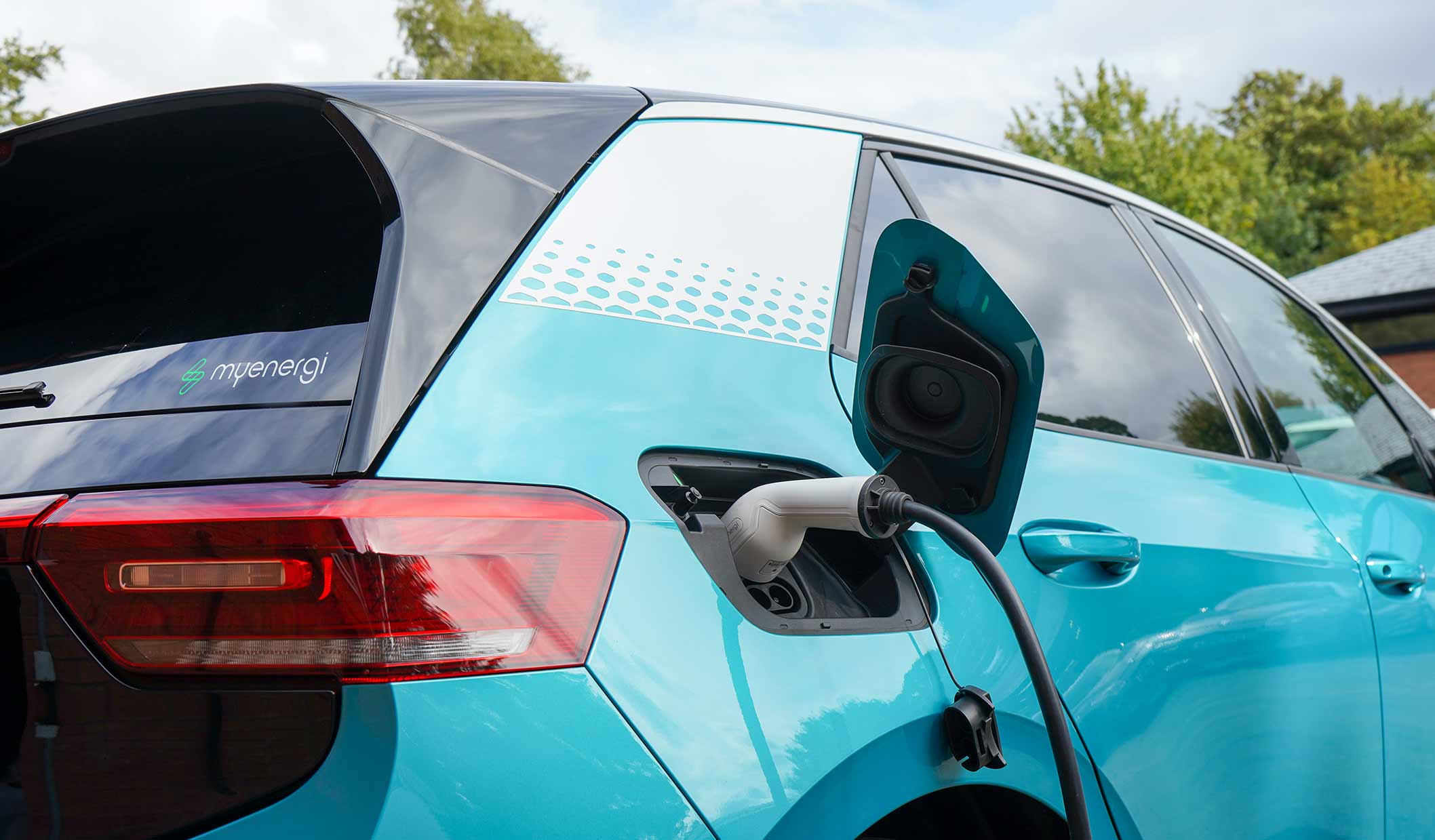
GreenCom
myGrid; Energy Efficient and Interoperable Smart Energy Systems for Local Communities
The GreenCom project is a 3-year project with the aim to utilise flexibility and intelligence in the low-voltage demand and local supply side infrastructure to create increased regulation capacity and reserve power in the centralised power grid by extending the means to effectively and securely manage and control the demand and supply within defined boundaries. The project thus aims to balance the local exchange of energy at the community microgrid level, to avoid affecting the centralized grid with instability.
To provide such means, the GreenCom project will develop a Smart Energy Management System (SEMS), i.e. an energy management and control platform that allows energy providers (Distribution System Operators or Retailers) for the first time ever to measure and balance load in the low-voltage grid and thereby prevent or reduce critical peak situations. It will thus allow the energy distributors to move beyond focussing on Power Grid efficiency and start focussing on Energy System effectiveness; a giant step forward in European energy distribution.
Rationale
The changes in the nature of power supply and demand will soon necessitate large investment in the enhancement of the power grid. In the EU at large, the investment needs are estimated to exceed 500 b€ by 2030 if transmission and distribution investments are included but the costs will vary significantly depending on whether the existing, traditional grid is expanded or if Smart Grid solutions are implemented.
By optimising the grid capacity with Smart Grids, the investment in infrastructure can be postponed. However, without a managed customer demand flexibility there will still be a need for large power grid investments because varying, stochastic demand from consumer consumption does not allow for a real and secure reduction in residual capacity. Only intensive grid monitoring, automation and reliable customer flexibility can provide reduced design limits.
Project data



Figure 1 Postponing power grid investments with Smart Technologies (Source: DONG Energy, 2011)
The aim of the future power grid is thus to achieve a very high degree of flexibility and the deployment of Smart Power Grids is expected to radically increase the efficiency of energy distribution, allowing for new potential flexible consumption and reduced residual capacity. By optimising the grid capacity with Smart Power Grids, the investment in infrastructure can be postponed as shown in Figure 1.
However, without a managed customer demand flexibility there will still be a need for large power grid investments because varying, stochastic demand from consumer consumption does not allow for a real and secure reduction in residual capacity. Only intensive grid monitoring, automation and reliable customer flexibility can provide reduced design limits.
Architecture
The GreenCom Smart Energy Management System (SEMS) collects aggregates and analyses real-time or near real-time consumption data from appliances, smart home devices, sensors and actuators and smart meters, via an independent data communication network. The GreenCom SEMS allows decision support and implements intelligent control of the consumption devices as well as management of local energy generating and storage installations. The GreenCom Smart Energy System will allow management of energy demand through intelligent control of the consumption devices and manage local energy generating and storage installations. The demand control will be based on individual consumer contracts with attractive tariffs, reward/penalty clauses and other value based elements.
It will thus be possible for energy providers, such as Distribution System Operators or Retailers, to shift large amounts of loads in the low-voltage grid in order to align the demand with needs and prices in the power system, balance fluctuations from e.g. renewable energy sources and prevent or reduce critical peak situations and balance electricity load demand without adversely affecting grid stability. The GreenCom SEMS Architecture is depicted in Figure 2.
Technology
The overall technological objectives of the GreenCom project are to:
- Develop a self-managing data and information network (HW, FW, MW) that can measure real-time data from energy consuming devices in homes, offices or commercial facilities in the low-voltage grid and forecast short-term energy consumption using time-resolved Data Models.
- Develop a new approach to data analysis and aggregation with decision support for providers that can be used to optimize the distribution of energy in and among microgrids, prevent or reduce critical peak situations and balance electricity load without adversely affecting grid stability.
- Develop a generic new data and control command network that can perform direct demand control of a large amount of heterogeneous energy consuming devices and subsystems in the low-voltage grid integrated with, and enabling, smart home installations with intelligent automation.
- Develop an energy generation and storage control network that supports “virtual” peer-to-peer energy exchange models at the community level, as opposed to the usual hierarchical approach, and which can optimise local exchange of energy within the grid at the community level.
The overall socio-economic objectives of the GreenCom project supporting the stated vision are to:
- Develop a business model framework based on the concept of dynamic value networks of actors such as energy providers, service providers, information providers, etc. that supports contractual demand control schemes, dynamic multi-tariffs, opportunities for load shifting, load shedding, storage utilisation, prioritisation of renewable energy, etc.
- Develop business cases that demonstrate to the energy provider the economic attractiveness of Smart Energy Management Systems and the GreenCom infrastructure in terms of shifting and optimising load on the grid, aligning the demand with needs and prices, maximized the use of renewable energy sources, and balance electricity load without adversely affecting grid stability.
- Develop business cases that allow consumers to actively engage in their energy supply and demand at the personal as well as at the community level and enable motivational schemes for energy efficiency, savings and delivery of electricity in the most cost effective and carbon friendly manner.
- Develop business cases that facilitate “virtual” peer-to-peer energy exchange between consumers and producers in the community and thus promote the construction and efficiency of renewable energy sources and storage technologies in the community and to and from the distribution grid.
The GreenCom project will develop easy to retrofit and maintain hardware and middleware tools with wireless or wired data collection and control capabilities and demonstrate seamless interoperability and self-discovery amongst multiple devices and sub-systems using machine-to-machine (M2M) middleware. To achieve these objectives, the GreenCom project leverages from the open source LinkSmart middleware developed in the previous Hydra project.
The Microgrid Manager (MGM) is the central components in the Smart Energy Management System. Each MGM performs data aggregation in near-real time across thousands of devices and sub-systems in hundreds of physical locations. It collects three-dimensional datasets of instantaneous measurement, time-resolved forecasts and context information. The MGM employs a data driven approach to profiling of the physical environment. To understand and predict energy needs, weather history and weather predictions are added to the analysis. So is grid topology in order to minimize transmission losses. Finally, the MGM analyses the individual data against prosumer contracts and energy policies with the aim to find, qualify and calculate economic value for a range of possible options for demand management in the grid.
As a decision support system for the energy distribution operator, the MGM is a very time critical application. The GreenCom has solved this challenge by allowing the MGM to leverage on pre-processed data in standardised data formats from several caching service components.
The GreenCom project will analyse and develop realistic business model for consumers, service providers, energy distributors, and other actors. New research will be undertaken into defining and measuring value creation in dynamic energy constellations, leading to innovative business structures involving energy providers and service providers in collaborative systems. Business modelling involves analysis and development of realistic, sustainable business models for all stakeholders in the value network.
Expected Project Outcomes
The main outcomes of the project are:
- A novel, integrated and interoperable, SOA architecture with LinkSmart middleware.
- A Smart Energy Management System that includes real-time demand control and response management, energy policy execution, integration with smart meters for billing and intelligent home management via gateways.
- Intelligent gateways and the Home Area Network that captures real-time consumption data from many heterogeneous devices and fuses it to Microgrid Manager for economic analysis/use.
- GreenCom gateways (hubs) that allow interoperability of measurement and control of M2M API equipped devices with heterogeneous protocols, thus enabling intelligent automation.
- Means for integrating local renewable energy sources into the Microgrid Manager for energy balance.
A Microgrid Manager that provides analysis and decision support for secure demand management in the low-voltage grid.
In-JeT’s role in the project
In-JeT is the concept developer of the GreenCom project. As manager of the workpackage on business models and requirements engineering, we are developing new business models for demand control in Smart Grids together with the energy provider EnergiMidt. We are then managing the iterative requirement process and develop procedures for capturing Lessons Learned and perform requirements re-engineering, constantly keeping the project aligned with its objectives and vision.
Partners
Funding
Co- funded by the European Commission 7th Framework Programme for Research






